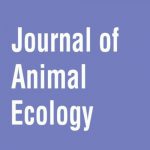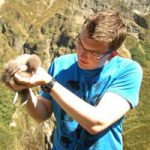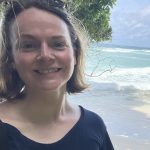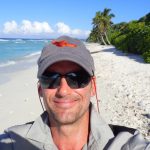Birds Without Borders or Isolated Islands? Connectivity of Western Indian Ocean Seabirds
Project Overview
Human activities have negatively impacted seabird populations globally and a loss breeding colonies has led to population collapse and fragmentation. In the tropical Indian Ocean, the remaining breeding colonies are frequently restricted to remote and undisturbed oceanic islands.
The connection of different seabird populations in the Western Indian Ocean, and their genetic relatedness, is key to seabird conservation. Isolated populations are less resilient than inter-connected ones, and he amount of movement between sites will influence the recolonisation of islands which have been restored. Identifying sites where seabirds and their prey interact in vast open ocean helps inform how areas are protected and managed. This multi-team project is working to understand connectivity among seabird communities at the scale of the Western Indian Ocean, and also more locally within the Chagos Archipelago.
Western Indian Ocean
This project assesses how breeding colonies of six, ecologically contrasting seabird species are connected within the Western Indian Ocean by establishing the rate of gene flow between colonies. This will identify discrete ‘conservation or management units’ which are themselves made up of one or more connected colonies.
The team are also exploring what encourages the birds to move to other islands. It is doing this by tracking bird movements using satellite tags and identifying areas that are foraging hotspots for breeding red-footed boobies (Sula sula) and wedge-tailed shearwaters (Ardenna pacifica). From these data the researchers can propose what the underlying environmental drivers are that are helping to create these hotspots. This then guides how, and where, seabirds can be protected in the region.
Chagos Archipelago
This multidisciplinary research project focusses on red-footed boobies (Sula sula) and wedge-tailed shearwaters (Ardenna pacifica). It combines observations of seabird movement and ecology together with data obtained from echosounders of the birds’ fish prey, oceanography and terrestrial habitat maps to determine what drives the movement of these seabird species on land and at sea. Importantly, it seeks to determine whether immature seabirds have a role in connecting colonies.
Researchers are using the Chagos Archipelago as a model system to answer questions about fine-scale movement and dispersal of seabirds, which can then be applied to other seabirds around the Indian Ocean region.
Publications

Homing Navigation is Optimized to Diurnal Constraints in a Tropical Seabird, the Red-Footed Booby
Coste, J., Votier, S.C., Dunn, R.E., Freeman, R., Nicoll, M.A., Carr, P., Wood, H., Trevail, A.M. (2025). Homing navigation is optimized to diurnal constraints in a tropical seabird, the red-footed booby. Animal Behaviour.

Sub-Colony Variation in Foraging Behaviour and at-Sea Distribution of a Breeding Tropical Seabird and Consequences for Marine Spatial Planning
Nicoll, M. A.C., Jaeger, A., Hector, A., Letori, J., Rocamora, G., Le Corre, M. (2024). Sub-colony variation in foraging behaviour and at-sea distribution of a breeding tropical seabird and consequences for marine spatial planning. Marine Biology

ExMove: An Open Source Toolkit for Processing and Exploring Animal Movement Data in R
Langley, L.P., Lang, S., Ozsanlav-Harris, L., Trevail, A. (2024). ExMove: An open source toolkit for processing and exploring animal movement data in R. Journal of Animal Ecology.

Comparable Foraging Effort and Habitat Use Between Two Geographically Proximate Tropical Seabird Colonies
Trevail, A.M., Vallocchia, S., Nicoll, M.A.C., Carr, P., Votier, S.C., Wood, H., Freeman, R. (2024). Comparable foraging effort and habitat use between two geographically proximate tropical seabird colonies. Marine Biology.

Geolocation and Immersion Loggers Reveal Year-Round Residency and Facilitate Nutrient Deposition Rate Estimation of Adult Red-Footed Boobies in the Chagos Archipelago, Tropical Indian Ocean
Votier, S.C., Corcoran, G., Carr, P., Dunn, R.E., Freeman, R., Nicoll, M.A.C., Wood, H., Trevail, A.M. (2024). Geolocation and immersion loggers reveal year-round residency and facilitate nutrient deposition rate estimation of adult red-footed boobies in the Chagos Archipelago, tropical Indian Ocean. Journal of Avian Biology.











